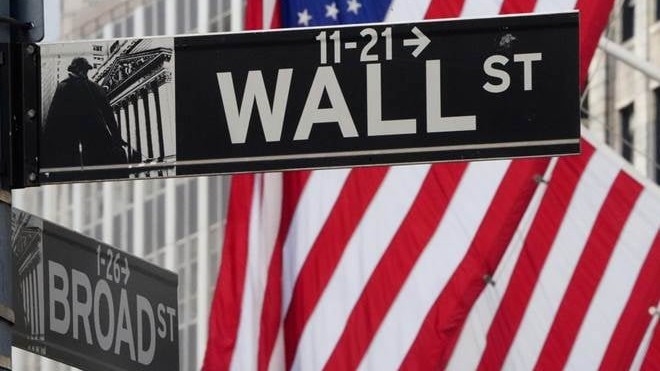U.S. stocks fell Friday as the Federal Reserve’s interest rate cut and the ‘Trump bump’ that Wall Street received from last week’s presidential election continued to wear off.
The S&P 500 and Nasdaq saw their largest one-day losses in two weeks as Wall Street’s major indexes closed lower on Friday due to investor reaction to U.S. President-elect Donald Trump’s cabinet selections and worries about slower interest rate cuts.
The S&P 500
The marquee index of the US stock market, the S&P 500, further declined into the red zone. The optimism that was brought on by the president-elect Donald Trump faded away after the week his win in the US presidential election was announced. The index saw further decline and went on to touch the day-low of 5,853.01 points after hitting the opening bell at the 5,912.79 points.

The opening bell was rung with a decline of 0.6 per cent compared to the closing bell level of the previous trading session on the bourses. After being taken over by the negative sentiment and receding euphoria of the Trump Effect, the S&P 500 concluded last trading session in the week at 5,870.62 points, with a decline of 1.32 per cent amounting to 78.55 points on the US bourse.
Nasdaq Composite
The index of the tech giants, comprising of the tech titan and forerunners in the race of tech and GenAI, like chip manufacturer Nvidia and delivery giant Amazon; the index comprising tech comp.es, Nasdaq Composite, also lost upward momentum and went on to touch the day-low of 18,598.87 after hitting the bell in negative territory at 18,929.92 points, compared to the closing bell level of the previous trading session, which stood at 19,107.65 points.

The tech heavy index was taken over by the bears from the opening bell, pushing opening in the negative zone, Bulls were unable to gain strength over the declining euphoria and commentry by Federal reserve chairman Jerome Powell. The index went to close at 18,680.12 points, slipping 2.24 per cent amounting to 427.53 points on the Us bourses.
Dow Jones Industrial Average
The Dow Jones took the road leading to downward movement; it touched the day low level of 43,350.43 points after hitting the opening bell at 43,587.93 points, with a decline of 0.37 per cent 163.92 points compared to the closing bell level of the previous trading session.
The Dow Jones was also controlled by the bears, which, like the others, indices the Trump effect, which took the US indices to the new all-time high levels and saw a correction after Jerome Powell, Chairman of the Federal Reserve, cited US macro data.

The index was declining for the entire trading session, eventually concluding at 43,444.99 points. After the bulls were unable to do anything or invoke any kind of positive momentum, Dow Jones further declined in to the negative territory, closing with a 0.70 per cent slip amounting to 305.87 points.
The trump effect
Since Election Day, when Trump’s victory rocked global financial markets, stocks have been soaring. Investors bet on the winners of Trump’s preference for higher tariffs, lower tax rates, and less regulation, and they immediately started sending up stocks of banks, smaller U.S. comp.es, and cryptocurrencies.
However, some of the possible drawbacks of Trump’s return to the White House are also being considered by investors.
Rate-cut train could take a halt
For the second time this year, the Fed cut its main interest rate earlier this month, and previous projections suggested that additional cuts were likely through 2025.
The economy and stock market can benefit from lower interest rates, but inflation may rise as a result.
On Thursday, Fed Chair Jerome Powell suggested the U.S. central bank may be cautious about future decisions on interest rates. Powell stated, “The economy is not sending any signals that we need to be in a hurry to lower rates,” but he would not address how Trump’s possible policies might change the situation.

